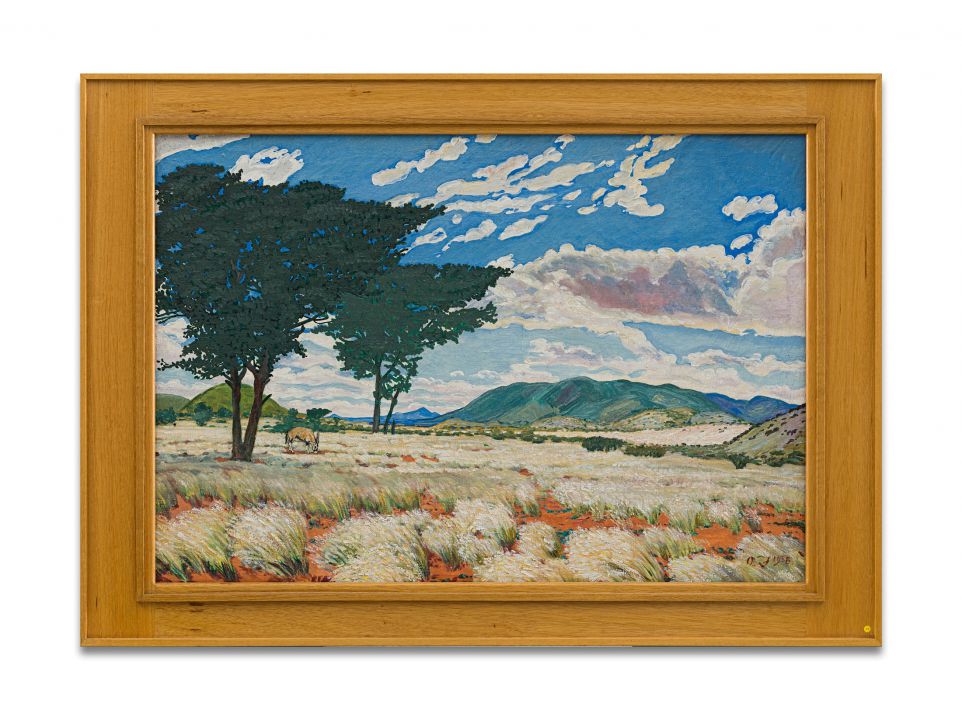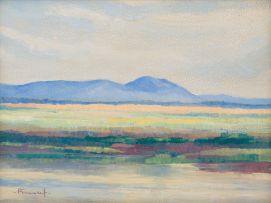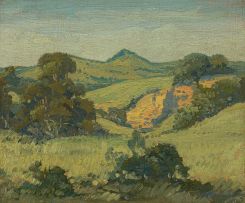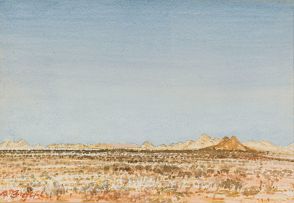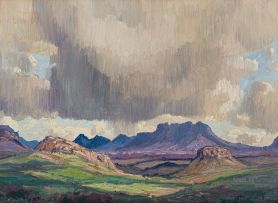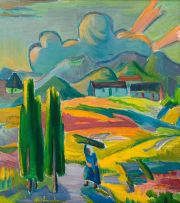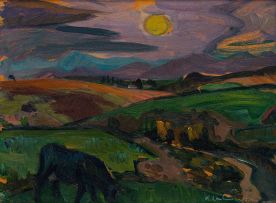Modern, Post War and Contemporary Art
Live Auction, 11 November 2019
Session One
Incl. Buyer's Premium & VAT
About this Item
signed and dated 1938
Notes
Wolfgang Biederlack was born in Windhoek in December 1933. Despite his farmer parents having emigrated from Germany amid the uncertainty of the Great Depression and the growing influence of National Socialism, his father was interned in South Africa during WWII. After serving an apprenticeship at Standard Bank in Windhoek, Wolfgang was transferred first to Gobabis and then to Lüderitz where, in 1964, he married Erika. As newlyweds, he and his wife travelled to Europe, returning to Windhoek with a selection of collected porcelain and antiques. Energised by his own research, Wolfgang subsequently developed a lifelong passion for Namibian art. By seeking out fine examples - whether privately or through local dealers - he built a beautiful and balanced survey collection of Namibian pictures that spanned nearly a century, and included works by the likes of Axel Eriksson, Heinz Pulon, Otto Schröder, Fritz Krampe, Otto Klar, Johannes and Arnfried Blatt, Keith Alexander, Nico Roos and, of course, Adolph Jentsch. While six highlights from the Biederlack collection follow here (Lots 20 to 25), the remaining works will appear in a dedicated session of Strauss & Co's Saturday Live Sale in Johannesburg on 19 October 2019.
Although born in Dresden, Adolph Jentsch, passionately endorsed by the perceptive Olga Levinson, remains the most iconic, evocative and beloved painter of the Namibian landscape. While he had rubbed shoulders at the Dresden Academy with Max Pechstein, George Grosz, Kurt Schwitters, and other radicals, Jentsch's natural inclination was towards a more traditional and doctrinal approach. Removed from a dark, industrial and jittery pre-War context in 1938, and faced with the endless horizons, still heat, and blazing light of the then South West African landscape, Jentsch devoted the rest of his painting career to his adopted surroundings. Travelling continuously, and painting en plein air, he produced a mystic and meditative body of work defined by calligraphic, flickering watercolours and thoughtful, stroke-rich oil paintings. Long drawn to the serenity and lull of Oriental philosophies, Jentsch found the vastness, calm and silence of the local landscape inspirational. The two present lots from the Biederlack Estate are typical and dazzling examples of the artist's output. Landscape with Lone Oryx relies on rich, contrasting colours: behind the smoke-white clouds is a deep cerulean blue, and between the clumps of bone-grey grass are patches of glowing scarlet and burning orange. Large-scale oil paintings by Jentsch are rare: the artist preferred to keep them in his own collection, and it is one of the region's greatest cultural tragedies that the majority were lost in a storage fire in 1975.
Provenance
The Estate of Wolfgang Biederlack, Windhoek.
